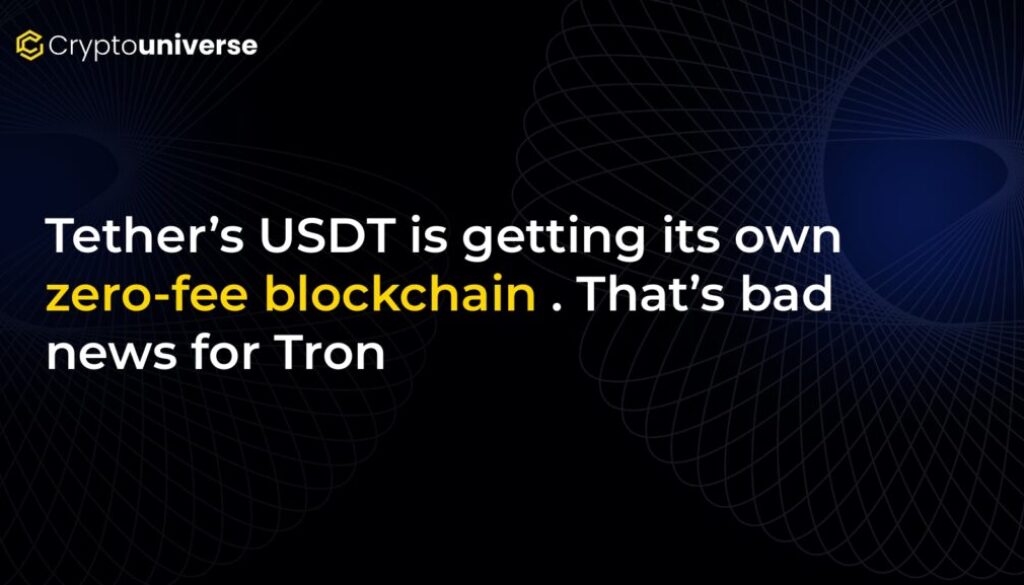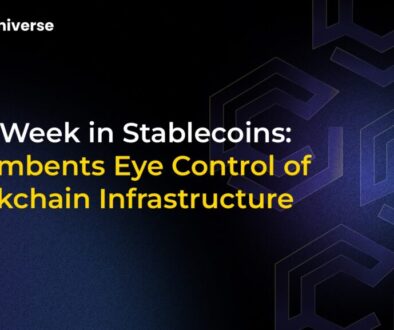Tether’s USDT is getting its own zero-fee blockchain. That’s bad news for Tron

The Stablecoin Arena Is About to Change Forever
The world of stablecoins is dominated by one name: Tether (USDT). For years, blockchains have battled to become the primary network for USDT transactions, reaping massive rewards in fees and network activity. Tron (TRX) has been the undisputed king of this domain, but a powerful new challenger is entering the ring, and it’s coming from Tether itself.
Tether has announced the upcoming launch of its own native blockchain, Plasma, with a game-changing proposition: zero-fee transfers for USDT. This move isn’t just a minor update; it’s a direct strategic assault on the revenue models of networks like Tron and a signal of a major shift in the stablecoin landscape.
Introducing Plasma: Tether’s Zero-Fee Power Play
Plasma is a new blockchain built with one primary goal: to become the most efficient and cost-effective network for moving USDT. Backed by Tether’s sister company, the crypto exchange Bitfinex, Plasma is not a small-scale experiment. It’s launching with significant momentum, having already raised an impressive $373 million through the sale of its native XPL token and is set to go live with $1 billion in deposits.
The core appeal is simple but powerful: zero transaction fees. This directly targets a major pain point for users, especially as networks like Tron have seen their fees rise.
This development marks a crucial evolution for stablecoin issuers. While Tether already earns billions from the US Treasuries backing its stablecoin (reporting a $4.9 billion profit in Q2), it’s now moving to capture the value generated from the usage of its token—a slice of the pie that has historically gone to third-party blockchains.
Why Tron Should Be Worried
Currently, the Tron network is the primary hub for USDT activity. It hosts a staggering $81 billion worth of the stablecoin and facilitates around 60% of all stablecoin transfers globally. This dominance is the lifeblood of the Tron ecosystem.
According to analysts at crypto bank Sygnum, this is a precarious position.
“Tron’s revenue dominance comes almost entirely from its outsized share of USDT transfers. This dominance may come under pressure as Tether launches its Plasma chain.”
Tron’s success was built on a combination of low fees, an early lead in emerging markets, and deep integration with Binance, the world’s largest crypto exchange. Users in developing nations, in particular, rely on Tron for cheap USDT transfers as a hedge against volatile local currencies. However, this advantage is fading. Tron’s USDT transfer fees have recently more than doubled to over $7, creating a perfect opening for a zero-fee competitor like Plasma.
More Than Just Lost Fees: The Threat to Liquidity
The financial impact on Tron could be severe. One analyst estimates that if Plasma captures a significant portion of USDT volume, Tron stands to lose between $1.6 million and $2.1 million per day in missed TRX token burning. Token burning reduces the total supply of TRX, which can help support its price. A reduction in burning could negatively impact the token’s economics.
However, some experts argue the bigger danger isn’t just lost revenue but something more fundamental.
“The bigger danger is thinner liquidity, not lost revenue.”
Liquidity is the amount of capital available on a blockchain for trading, lending, and other DeFi activities. If USDT moves from Tron to Plasma, Tron’s liquidity pools will shrink, making the network less attractive and less useful for traders and developers. Plasma, with the backing of Bitfinex, is positioned to replicate Tron’s playbook by building up massive USDT liquidity from day one.
What About Ethereum?
Tron isn’t the only network in the crosshairs. Ethereum, which hosts $67 billion in USDT, is also at risk. However, the nature of the threat is different.
A scenario where Ethereum loses 30% of its USDT volume to Plasma could cost the network between $230,000 and $370,000 in daily fees. While a smaller dollar amount than Tron’s potential loss, it could have a more significant impact on Ethereum’s inflationary status, where more new ETH is currently created than is burned via fees.
Despite this, Ethereum has a key defense: its user base. Ethereum’s DeFi ecosystem is dominated by institutional investors, professional money managers, and high-net-worth individuals. For these users, Ethereum’s long-standing security, decentralization, and reliability are worth the higher fees. It will take time for a new chain like Plasma to build the same level of trust and credibility needed to attract this institutional capital.
A New Era for Stablecoins
Tether’s move with Plasma is not happening in a vacuum. Rival stablecoin issuer Circle, the company behind USDC, announced its own in-house payments network in April. The trend is clear: stablecoin issuers are no longer content with just issuing tokens. They want to own the entire value chain, from creation to transaction.
The launch of Tether’s USDT is getting its own


